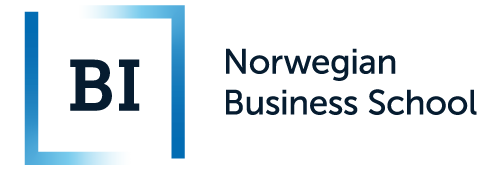EDI 3430 Digital Value Creation
EDI 3430 Digital Value Creation
Modern digital technologies affect how companies create value for customers, users, owners, and stakeholders. The changes are manifest in both the activities that firms perform and the resources that they rely on for activity performance. A key effect of digital technologies is changing the economics of activity performance and resource use with implications for key functional areas such as marketing, logistics, finance, HR, and strategy. The course will provide students with a conceptual frame of reference for understanding firms in the digital age.
A Digital Business candidate who has taken Digital Value Creation will have a comprehensive understanding of the various ways in which digital technologies affect value creation in firms or other organizations. For the purposes of this course value creation means using internal and external resources to perform activities that create value for customers and users. The use of digital technologies in value creation affects how activities are performed, and by whom, as well as the properties of resources being used. Generally activities change from being performed by human actors or equipment that they control toward information processing by autonomous or semi-autonomous digital agents working with humans. Examples of digital agents include robots used in operations and logistics and software bots used in customer service and sales. Modern robots and software bots are enabled by machine learning algorithms. Machine Learning algorithms are also used in human controlled activity performance. The corresponding digital resources are sensors and actuators, data, computer processing and storage equipment, algorithms and software. Specifically, upon successful completion of this course, candidates will understand (with reference to the above description):
- How the activities of firms and other organizations are affected by digital technologies
- How activities are performed by use of digital technologies
- By whom or what digitized activities are being performed
- The scale, scope, and competence implications of performing the activities of firms or other organizations digitally
- Properties of the resources required for a firm or other type of organization to effectively and efficiently perform activities digitally.
- Computer processing, storage, and communication technologies
- Value creation specific data
- Human resources
- How to analyze the value creation, that is the effectiveness and efficiency of value creating activities
- Matching digital technologies to the activities of different types of firms or other forms of organizations
- The cost structures related to activities being performed digitally as well as the cost structures of digital resources
- The drivers of value created for customers and the costs associated with creating this value
- Modelling value creation, specifically with respect the impact of performing activities digitally.
After completing the course students will be able to:
- Analyze value creation
- The identification of different types of organizations and their value creation
- The identification of relevant data sources for the analysis of value creation
- The use of data sources
- Developing and using Excel to model the effects of drivers of value creation. Drivers are structural factors, such as scale, scope, experience, policy choice etc. that affect the costs per relevant unit, e.g. products, transactions, customer relationships maintained etc. (The units vary across different types of firms.
- Use of Excel to analyze data and model operational and financial aspects of firms
- Knowledge of how different types of firms create value and how the nature of value creation affects competition and collaboration and the implications for strategic choice
- Digital activities and resources
- Drivers of performance and implications for strategy
- How different business logics are affected by digital technologies
- Value chains (manufacturing firms)
- Value shops (customer problem solving, e.g. medical, engineering, consulting firms)
- Value networks (e.g. telecommunication operators, financial services, social and transactional platforms)
- Value access (e.g. hotels and cloud server operations)
- Analyzing activities and resources with particular attention to use of digital technologies
- Configuring value creation
- Lectures
- Class discussions
- Group work
- Modelling
Software tools
- Excel
- Miro
The course concludes with a semester assignment consisting of three videos and Excel models. The semester assignment can be solved individually or in groups of 1-3 students, and the students will receive feedback on their work during the course.
Higher Education Entrance Qualification
Disclaimer
Deviations in teaching and exams may occur if external conditions or unforeseen events call for this.
No particular prerequisites are required.
| Assessments |
|---|
Exam category: Submission Form of assessment: Portfolio Assessment other than PDF Exam/hand-in semester: First Semester Weight: 100 Grouping: Group (1 - 4) Duration: 1 Semester(s) Comment: The semester assignment is organised as a portfolio which must include three videos and Excel models. Students will receive feedback on their work during the course. Exam code: EDI 34301 Grading scale: ECTS Resit: Examination when next scheduled course |
| Activity | Duration | Comment |
|---|---|---|
Teaching | 36 Hour(s) | |
Feedback activities and counselling | 9 Hour(s) | Plenary review of submissions |
Prepare for teaching | 60 Hour(s) | |
Student's own work with learning resources | 77 Hour(s) | |
Examination | 18 Hour(s) | 15 + 3 hours |
A course of 1 ECTS credit corresponds to a workload of 26-30 hours. Therefore a course of 7,5 ECTS credit corresponds to a workload of at least 200 hours.
